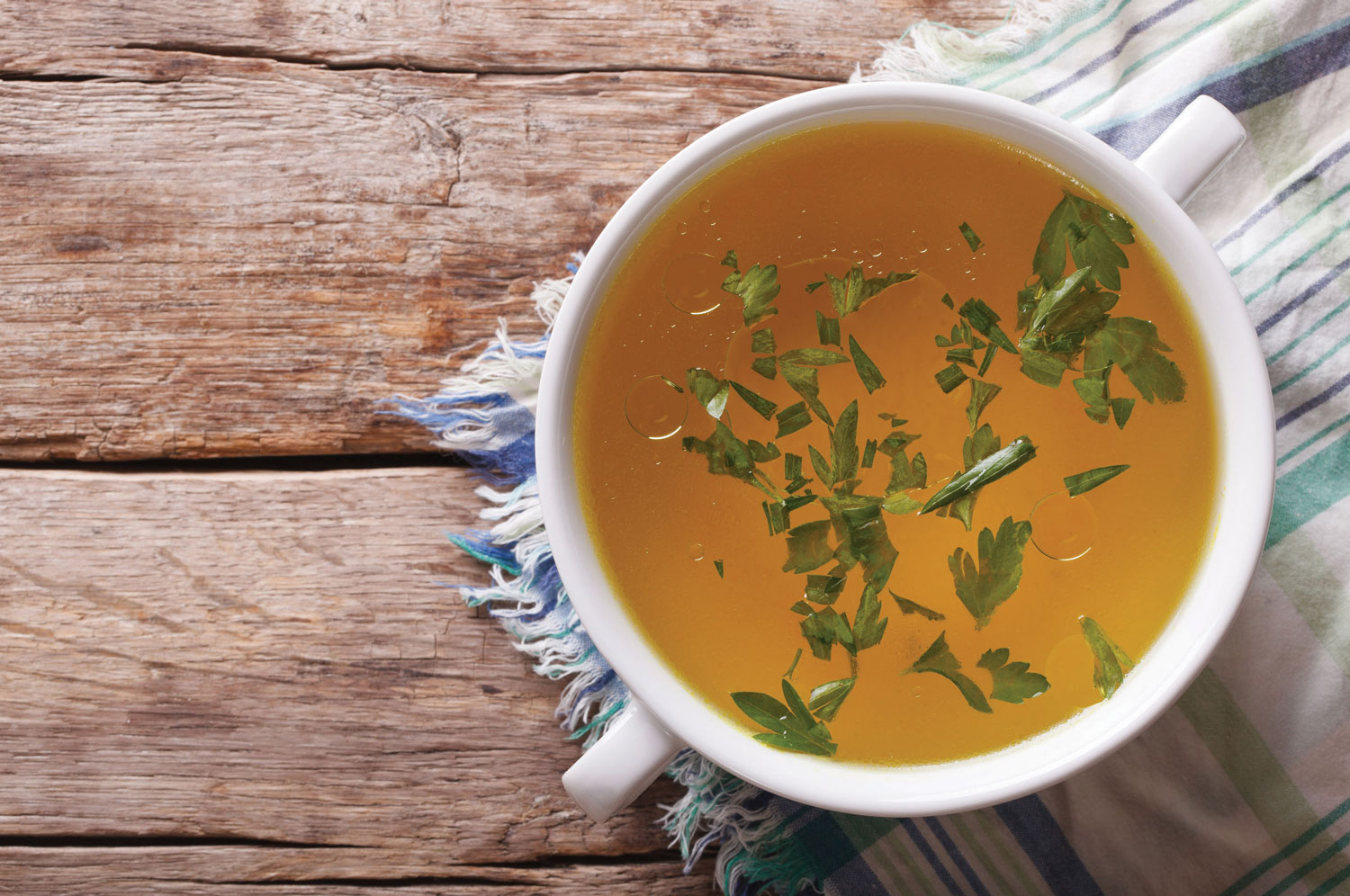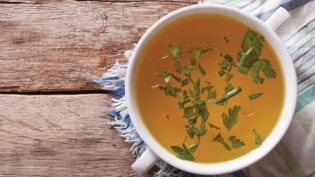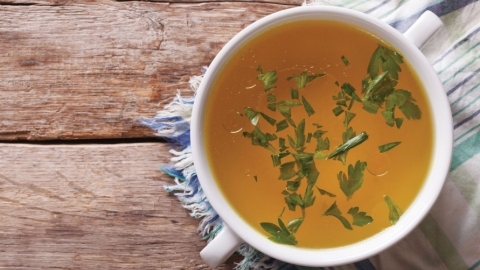Bone Broth
Bone broth has been a dietary staple in certain cultures for centuries, but it’s just now hitting the mainstream with the increasing popularity of the Paleo Diet. Back in the day, it was every farm wife’s task to boil down animal bones into a rich, nutritious broth (chicken soup isn’t known as “Jewish penicillin” because of a chicken-flavored packet).
Consider sustainably raised poultry and livestock as a sort of multivitamin broken down into distinct parts: organs contain essential fatty acids, vitamins and minerals, while the bones, cartilage, tendons, skin and ligaments have their own nutritional profile that includes collagen, protein, fat, minerals and other nutrients. The collagen within the bones, tendons and ligaments dissolves into gelatin via heat. Gelatin is full of amino acids as well as glucosamine and chondroitin, which help to rebuild your own connective tissues. Bone broth has also been touted as ideal for autoimmune disorders, and as a way to improve digestion and sleep.
When you complete your first batch of bone broth, it’s a bit like cutting into a layer cake composed of fat, gelatin and meat scraps: Heat it and it all melts and integrates into a homogenous liquid.
But how does it taste, you ask? Beef and wild and farmed game broth can range from mild to a stronger, more intense flavor, while poultry yields a more rich, savory taste.
This winter, remember that every bone is sacred and store them in the freezer until ready for use.






